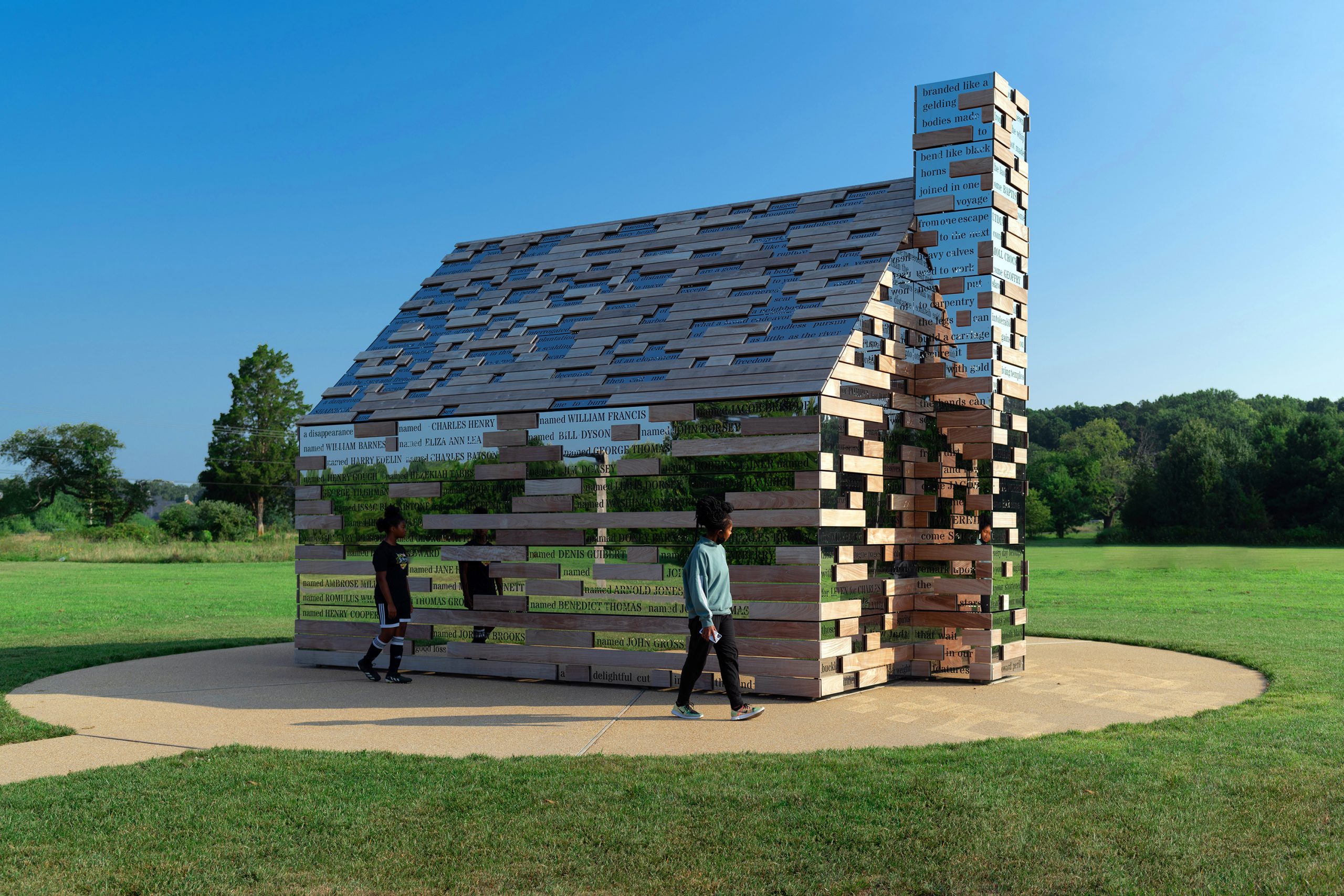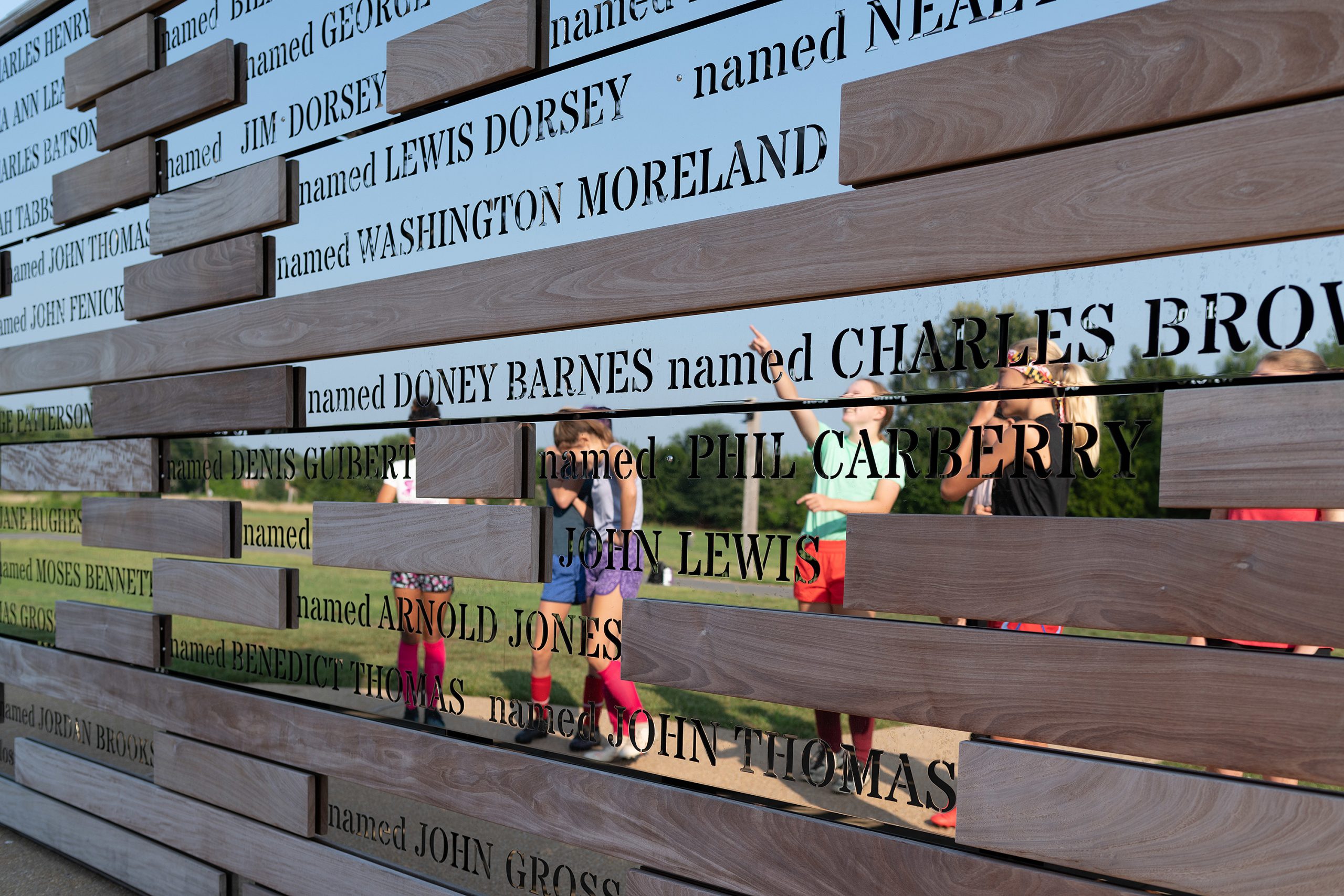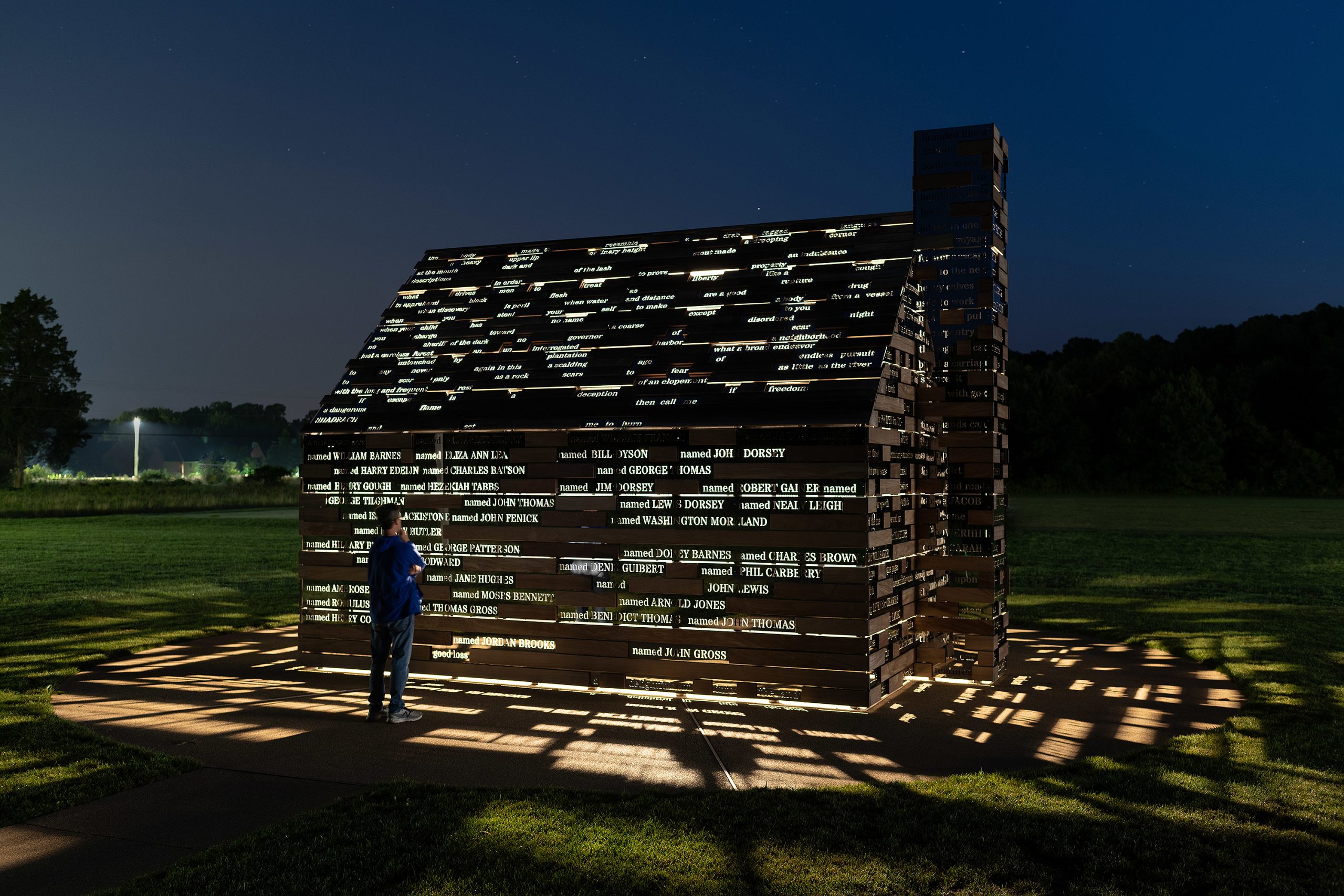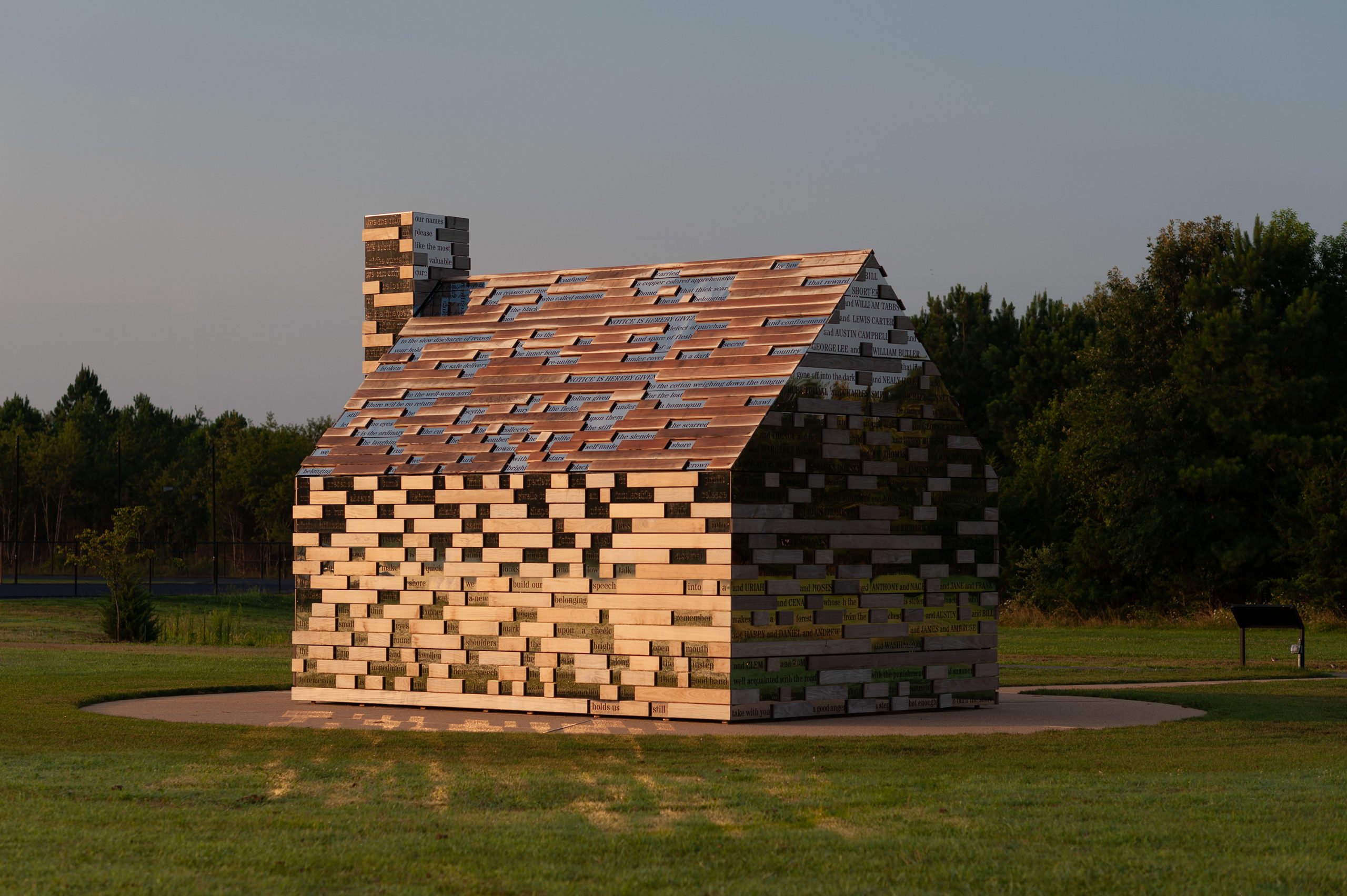





Client: St. Mary’s College of Maryland
Location: St. Mary’s City, MD, United States
Completion date: 2020
Project Team
Artist
Shane Albritton, Norman Lee
RE:site
Artist
Quenton Baker
Design Optimization / Project Management
METALAB
Overview
From Absence to Presence takes the form of a slave quarter that materializes from the ground up evoking how this history was uncovered from archaeological research – making the invisible visible. The surfaces are gradated in a pattern of staggered and alternating Ipe wood clapboard and mirror polished stainless steel, recalling the staggered pattern of erasure poetry. At night, the words of poetry become dramatically illuminated. This appears as a beacon that becomes an eternal vigil to the memory and resilience of the enslaved people who once lived, loved, worked, and resisted on the grounds of St. Mary’s College.Goals
During archaeological work that preceded construction of a new stadium, St. Mary’s College discovered evidence of slave quarters from two distinct periods that pre-date the founding of the College. The theme of this commemorative artwork will offer viewers an opportunity to contemplate and reflect upon the lives of these enslaved people and celebrate their resilience, determination, and persistence. Major themes related to the artwork are “The past is never dead,” the idea of redemption, and making the invisible visible.
Our expression of poetry through the tectonic slave quarter form is inspired by the sculptural presence of the “ghost frame” architecture that is found on the sites of Historic St. Mary’s City. These structures gesture towards the idea of an emergent narrative on the verge of becoming. Activist Angela Davis described the sacredness of slave quarters in the lives of enslaved peoples as “the only space where they could truly experience themselves as human beings.” We envision the private space of the slave quarters as a symbol of resilience, determination, and persistence.
Process
Erasure poetry is a way to give an existing piece of writing a new set of meanings, questions, or suggestions. We were honored to have Poet Quenton Baker join our design team, composing meaningful verse that joins the sculptural expression of the commemoration, freedom, and slavery. Quenton has drawn from utilitarian documents related to the Mackall-Broome plantation and recontextualized the text into poetry through erasure, giving it a powerful site-specific resonance.
Additional Information
The reflective nature of the surfaces suggests that even as viewers of the present day, we are not to penetrate the sacred private space of the enslaved people who were once present at the site. The Commemoration juxtaposes the current site of sports field with its slave past, holding them in dramatic tension. This connects our lives with the lives of slaves, reflecting on how we as Americans are connected to this history. When viewers engage the work, they see themselves, the activity surrounding a sports event reflected, interlaced with poetic text, coalescing into a visually resonant sculptural experience.